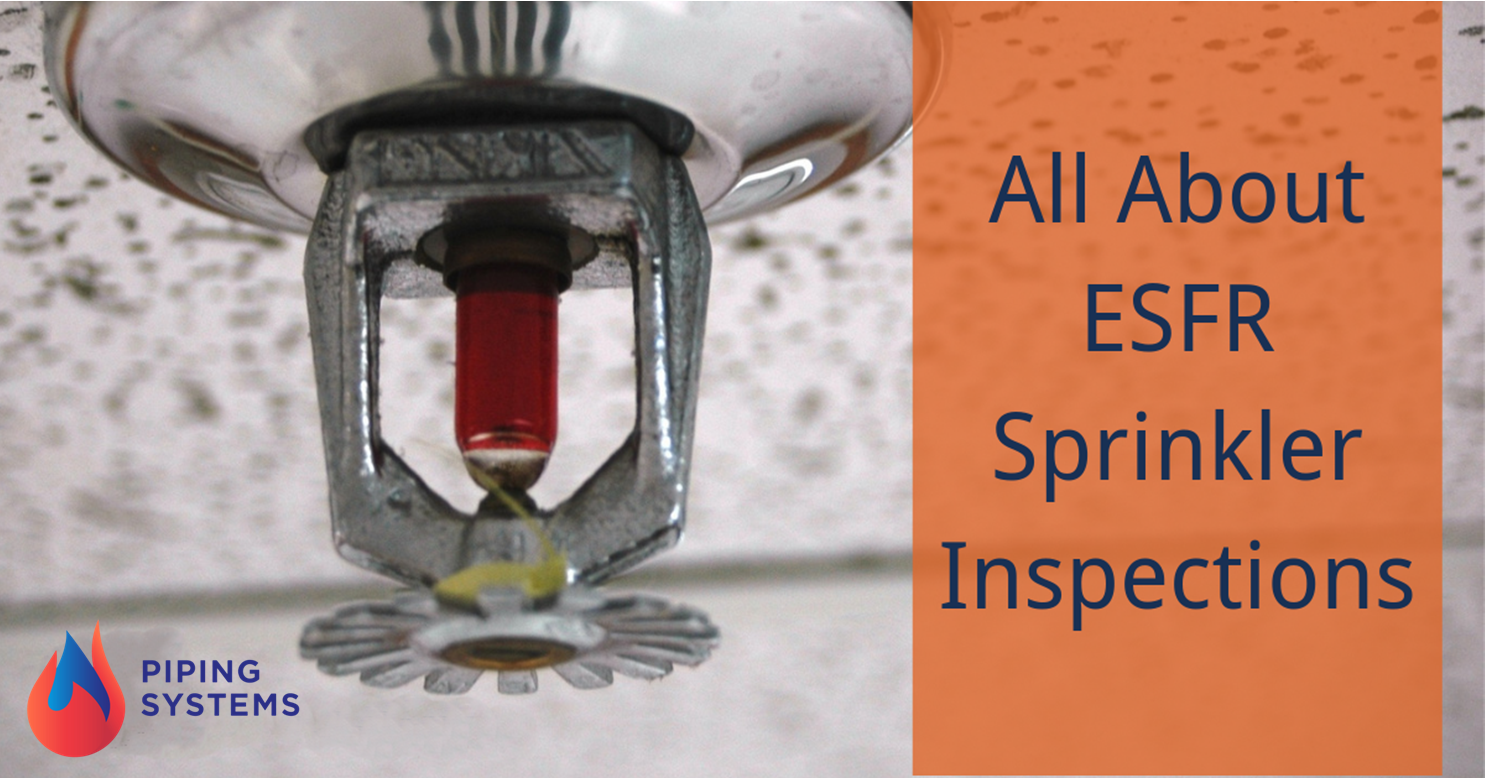Published May 6, 2019

As technology evolves, so do the methods used to provide protection to different types of buildings.
In warehouses and other similar types of operations, there are two different options for fire suppression systems, also known as sprinkler systems.
Control Mode Options
The two different systems are designed for two different approaches to dealing with a fire in the plant, facility or building.
The Control Mode system is a control type of system, designed to slow down the fire and to allow the fire department or responders time to arrive on the scene.
These types of sprinklers provide water in and around the area where the fire occurs to prevent the spread of the fire, but not with the specific intent of extinguishing the fire. They cool the air above and around the area of the fire, which prevents damage to the ceiling area while also preventing the spread of the fire. The surrounding sprinkler wet the immediate area, containing the flames.
ESFR System Options
The ESFR or Early Suppression Fast Response types of systems for warehouses and other types of buildings use a different approach. They use significantly more water and provide enough water directly into the fire to allow for the blaze to be completely extinguished as opposed to controlling it until it burns out.
With the use of the ESFR system, it is essential to make sure that all aspects of the system are continually in good repair and well-maintained.
Through ESFR sprinkler inspections, a business can be assured that in the event of the fire, the system provides the water volume and pressure needed to fully extinguish the flames.
The nature of the operation of the ESFR system means larger pipes are used and there are larger sprinkler heads to allow for the fast delivery of water to any area of the facility.
Inspection Considerations
With the inspection of the ESFR system, a visual inspection is just the first step. This is, however, an important step as any damage to the pipes, sprinkler heads or any valves in the system needs to be assessed before a flow and pressure test can be effectively completed.
The guidelines that the inspection service use is the NFPA 25 Standards for Inspection, Testing, and Maintenance of Water-Based Fire Protection Systems. Different aspects of the inspection should be completed quarterly, semi-annually and annually, with full testing and tagging as part of an annual testing requirement.
Other factors that are addressed during these inspections can be the placement of materials in relation to the location of the sprinkler heads. This is particularly important in warehouses where racking and stacking materials incorrectly can result in obstruction of the sprinkler head. In the event of a fire, this type of obstruction can limit the ability of the system to provide the volume of water needed to effectively extinguish the fire.
Depending on the environment and the working conditions in the facility, replacement of the sprinklers needs to be considered on a specific basis. In high-temperature types of applications or when corrosion is a concern, ESFR sprinklers and gauges should be individually checked every five years, replacing those that are no longer fully functioning.